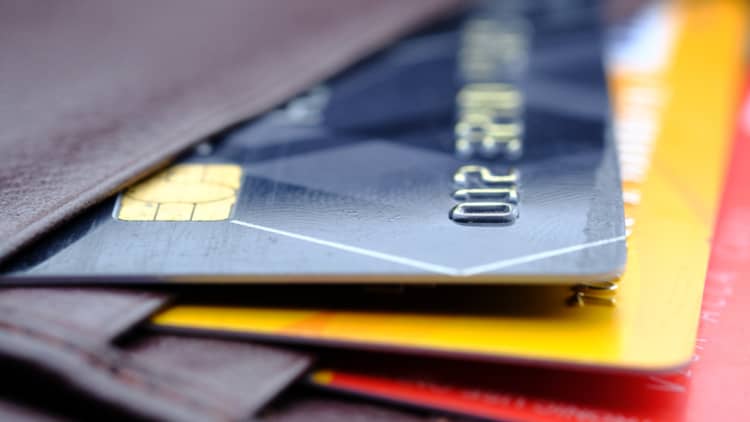Hungry for credit card rewards? You might want to make a reservation.
More banks are offering rewards for dining out than ever before, said Julian Mark Kheel, senior analyst at The Points Guy. "The competition to reward credit card users with bonuses at restaurants has become fierce in recent years," he added.
The trend was set off by Uber in 2017, when it launched its Visa card with 4 percent cash back on dining, said Ted Rossman, an industry analyst at Creditcards.com.
"Then things really heated up in the second half of 2018," he said.
Capital One raised the dining rewards ante on its Savor card to 4 percent cash back, from 3 percent. Shortly after, American Express lifted the dining rewards on its Gold card to 4 points per dollar, from 2 points.
And now people can apply for the Citi Prestige card, which will grant 5 points per dollar spent at restaurants.
"Dining out a lot suggests a more affluent lifestyle and a higher level of spending that the issuers want a piece of," Rossman said.
Americans are spending more on eating out: In 2017, the average expenditures on "food away from home" was $3,365, according to the Bureau of Labor Statistics. That's up from $3,154 in 2016 and $3,008 in 2015.
A number of websites rank cards with the best dining rewards, including CNBC Make It.
To avoid being charged any interest, only put expenses on your card that you'll be able to pay off each month, especially since rates are at historic highs.
And these cards make most sense if you already eat out with some frequency, said Matt Schulz, chief industry analyst at Comparecards.com. "The last thing anyone should ever do is overspend just to get credit card rewards," he said.
Before you apply for a card, figure out what the fees will be, Schulz said. The Amex Gold card comes with an annual $250 charge and the Citi Prestige costs $495 a year, while the Capital One Savor card is free the first year, and $95 after that. The Uber Visa card has no fee. "Take the time to do the math and make sure you understand what you're getting into," he said.
For those who are looking for a "solid, inexpensive" card, Kheel recommends the Chase Sapphire Preferred. Users will get extra points at restaurants, breweries and cafes.
You'll also want to consider how you want to spend your rewards, Rossman said. The Uber Visa and Capital One Savor cards are cash-back, whereas the points you pick up on the Amex Gold or Citi Prestige cards can be transferred to redeem free flights and hotel stays.

Sign-up bonuses vary, too, and are worth factoring into your card decision, Rossman said. The Citi Prestige card comes with 50,000 points, which is worth $500 in travel. Capital One Savor will get you $500 cash back.
If you're wondering what counts as "dining," there's a helpful breakdown of the different rules on The Points Guy website.
For example, Chase includes establishments "whose primary business is sit-down or eat-in dining," and therefore your dinner at a hotel or casino may not count.
Some banks "count delivery services such as Seamless and Grubhub as dining purchases," Kheel said, "meaning you can earn bonus points even if you never step foot in the restaurant."
More from Personal Finance:
This workplace perk could make it easier to save for emergencies
Do you know your net worth? Here's how to figure it out
This retirement plan feature can help you save on taxes — if you can find it at work


